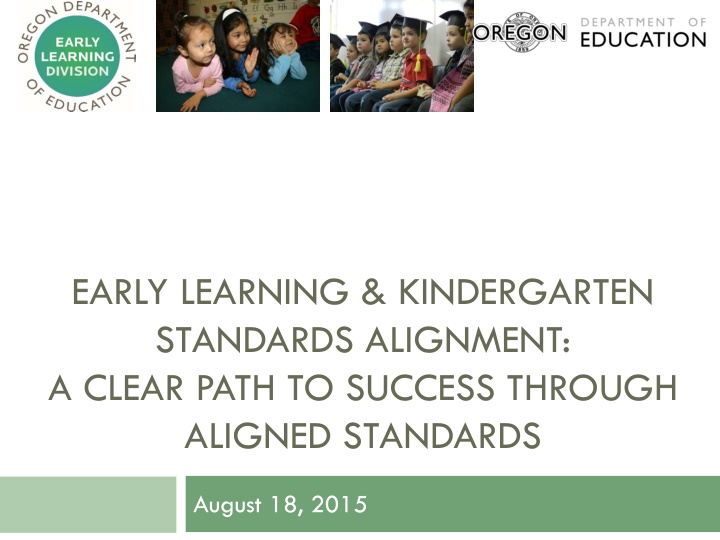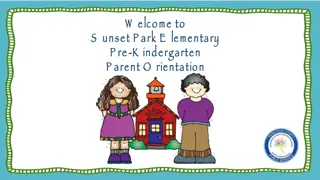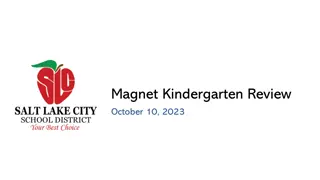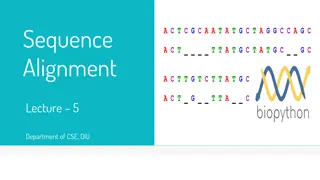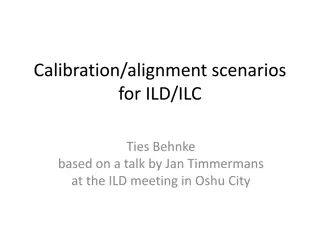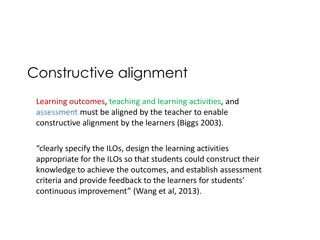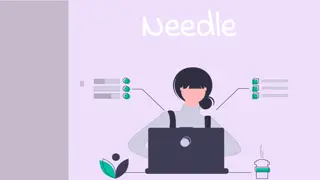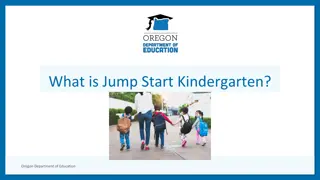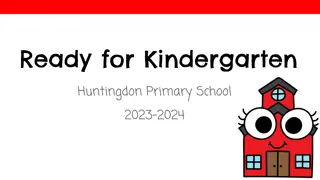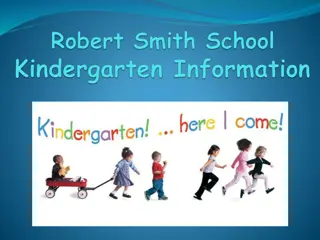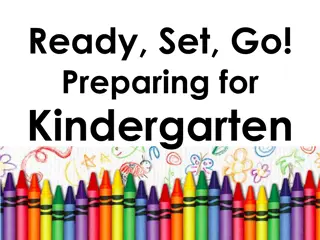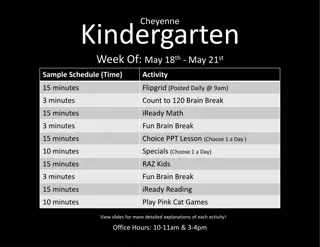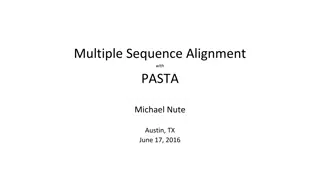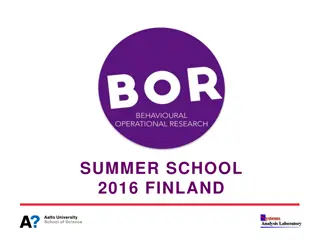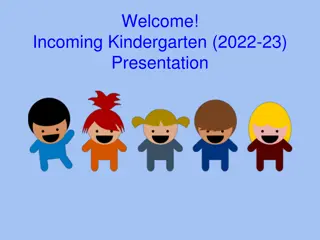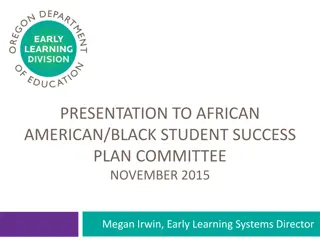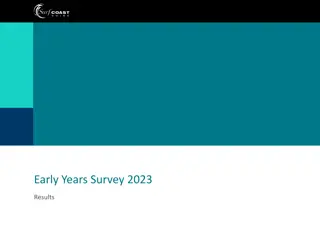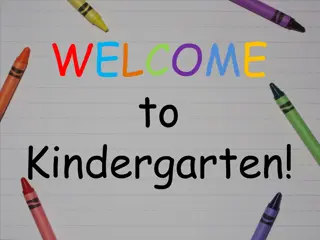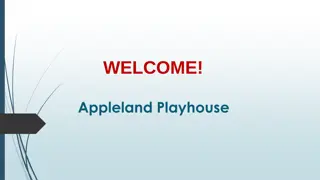Early Learning & Kindergarten Standards Alignment: A Path to Success
Understanding the importance of PreK-3rd alignment and the core components of a PreK-3rd education approach is crucial for success in American education. Academic and developmental standards must align with developmentally appropriate practice, fostering social competence, self-discipline, and academic skills. The Oregon Early Learning and Kindergarten Standards Alignment Project aims to align early learning and development standards with kindergarten academic standards, providing tools to support implementation and close access and opportunity gaps.
Uploaded on Sep 07, 2024 | 4 Views
Download Presentation

Please find below an Image/Link to download the presentation.
The content on the website is provided AS IS for your information and personal use only. It may not be sold, licensed, or shared on other websites without obtaining consent from the author.If you encounter any issues during the download, it is possible that the publisher has removed the file from their server.
You are allowed to download the files provided on this website for personal or commercial use, subject to the condition that they are used lawfully. All files are the property of their respective owners.
The content on the website is provided AS IS for your information and personal use only. It may not be sold, licensed, or shared on other websites without obtaining consent from the author.
E N D
Presentation Transcript
EARLY LEARNING & KINDERGARTEN STANDARDS ALIGNMENT: A CLEAR PATH TO SUCCESS THROUGH ALIGNED STANDARDS August 18, 2015
Outcomes After today s session, the group will: Understand the importance of PreK-3rdAlignment Be aware of the state s current effort to align Prekindergarten and Kindergarten Standards
Why P-3 Alignment? PreKindergarten-3rd Grade: A New Beginning for American Education
5 Core Components of a PreK-3rd Approach Five components are core to a PreK-3rd approach to education: Alignment School organization Qualified teachers Classrooms as learning environments Accountability to parents and communities
Alignment Standards, curricula, instruction, assessment, and professional development are strongly connected within and across grades from PreK through Third Grade Standards, curriculum, instruction, assessment, and professional development focus on both social competence and self-discipline as well as academic skills
How do Academic and Developmental Standards Fit with DAP? Academic rigor meets developmental science Academic content is the what Developmentally appropriate practice is the how
Oregons Early Learning and Kindergarten Standards Alignment Project Goals Clearly articulate how the domains of Oregon s early learning and development standards align with Oregon s academic standards for kindergarten Develop a set of tools and resources to support the implementation of aligned standards across the P-3 continuum Ensure that the products are culturally responsive and help close access and opportunity gaps 1. 2. 3.
Oregons Early Learning and Kindergarten Standards Kindergarten Transition Aligned Standards for Children Ages 3 to Kindergarten
Domains Included in Alignment Approaches to Learning HS Framework + New Standards for K Social and Emotional HS Framework + New standards for K Language and Communication HS Framework + CCSS ELA-K Literacy HS Framework + CCSS ELA-K Mathematics HS Framework + CCSS Math-K
Alignment Workgroups Guiding Values Embrace equity Equity of voice Culturally responsive practice Closing access & opportunity gaps Learn from others Local standards alignment efforts Other states Respect different funds of knowledge, experience, and perspectives Balance developmentally appropriate and academic vigor Isolate standards from curriculum, instruction, and assessment (for now)
Project Recap To Date March 2015: Project launched in March with a 35+ member work group consisting of experts from early learning, K-12, and the research community. April-June 2015: Four small work groups drafted aligned standards language for the domains of language, literacy, math, and social-emotional development/approaches to learning. June 23-24, 2015: In-person, work group decided to: Use new Head Start Learning Outcomes Framework as the foundation for aligned standards Include domain-level introductory narrative Include age level progressions July 2015: Initial working draft language was shared with the work group via webinar. Key areas for feedback included: How inclusive is draft language of multiple settings? How culturally responsive is the draft language? How effectively does draft language address accommodations/differentiation for children who receive special education services?
Project Recap to Date, cont. August 18, 2015: Workgroup convened for one day in- person session. Broke into five small groups focusing on: Learning Progressions Equity Lens Supports for Children With Disabilities What Adults Can Do Domain Narrative & Document Introduction
Review of Alignment Documents This group will have the opportunity to look at the structure and format of the draft documents.
Next Steps Staff will compile revised domain and narrative language into a single document Phase II of the project Stakeholder engagement Resource development Design Launch
Feedback from the Group If you were in charge of rolling out the standards alignment, what would you do? What kinds of tools/resources would you like to see to accompany it? With your experience in education, what are some examples of highly effective resources? What made them highly effective?
